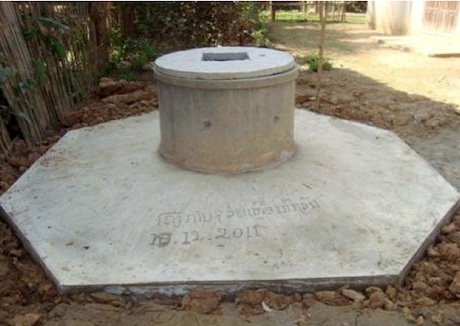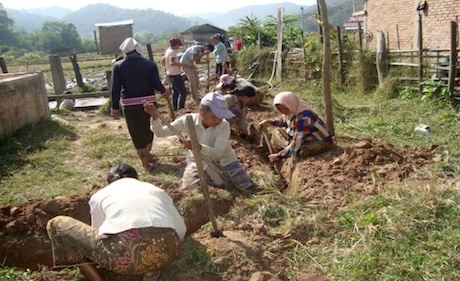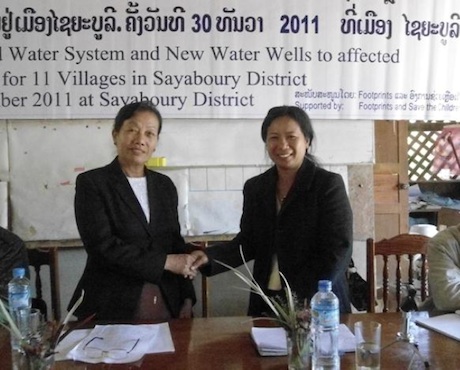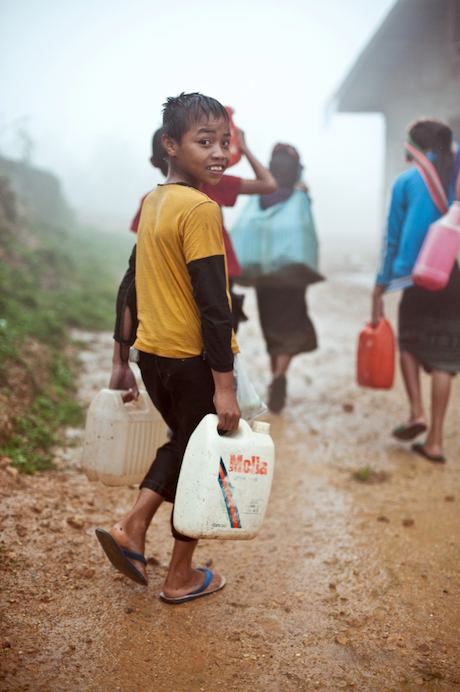Overview
With wells destroyed following heavy flooding during July 2011, the project aims to provide villages with sufficient water for drinking and hygiene purposes.
Activities and outcomes
The project provided funding for raw materials to enable the reconstruction of 53 water wells in 9 villages and repairs for a gravity well system in Namone village. The local government supported technical staff to lead the construction process and communities provided the necessary labour.
As a result:
- The water wells serve 142 households: 658 individuals (354 female), and 196 children (100 girls).
- The gravity well water system serves 301 families: 1572 individuals (628 females), and 650 children (160 girls). In addition the water system also serves in a primary school which has 309 students, (160 female)
- All of the communities now have access to water for drinking, cooking, bathing, and gardening.
- Women and children are now spending less time during the day collecting water for their daily needs, which provides more time for livelihood activities and educational learning.
- Community members have gained skills in the construction of water wells and the basic repair of water systems.

Photo: A completed well.

Photo: Construction of a new waterhead for the gravity water system that protects the water source

Photo: Local villagers busy repairing 2 pipes and building 3 new pipes (600m) as part of the gravity fed water system
Community Involvement
The community provided labour and raw materials such as wood and sand which was collected locally. As the community participated in the reconstruction they were also provided with basic knowledge of how to repair simple water systems.
After project completion, the community created two groups. The groups will monitor the water system on a monthly basis. There are 2 people in each group who are in charge of the financial management, and the head of the group collects the 'water' fees. In addition, each head has been given technical training in order to repair water systems in the future.
In late December 2011, the Technical staff from District Health Care conducted training on water system management to the community at Ban Namone. 32 participants (incl 7 females), gained skills, technical training and understanding on how to save, clean and manage the water system.

Photo: On 30th December 2011, on completion of the repairs, the Sayaboury PDMC (Provincial Disaster Management Committee) and DDMC (District Disaster Management Committee) handed over the water supply to the community.
This project will give all villagers access to quality water through the construction of 53 new water wells in 8 Sayaboury District villages, where the old wells were damaged through flooding and are now unusable. Also, reparation of the water system and pipe replacement in Namone village.
Funding for this project will cover:
- Provision of materials including piping, concrete rings, iron roofs, steel, bricks, nails, fasten steel and cement for the construction of the water wells, piping and protection huts.
- Additionally, there is funding for technical support and training for the affected families on how to maintain the water system.
- The local community will be contributing further local materials and labour.
Aims and Objectives
The objective of the program is to ensure that all flood affected people have access to an essential water resource in their own village.
This will be achieved through enabling the PDMC (provincial Disaster Management Committee) and DDMC (District Disaster Management Committee) in Sayaboury district to support the community in recovery from the effects of the July 2011 flooding.
Outcomes:
- Sufficient and safe water for drinking and hygiene purposes.
- Decreased time for women and children to collect water - since the destruction of the wells, water is only available further away from home
Background to the Situation
24 villages were flooded and 216 wells were destroyed in the recent floods. Government funds were available only for cleaning up the flooded areas, leaving 53 water wells across 8 of the villages that could not be used and needed replacement. These wells serve 504 households and approximately 2,259 individuals.
Project Partners / community
DDMC (District Disaster Management Committee) in Sayaboury and Village Disaster Management Committee consisting of technical staff from provincial Health will work in coordination and delivery of these activities. Local material and labour for construction will form a part of community contribution.
